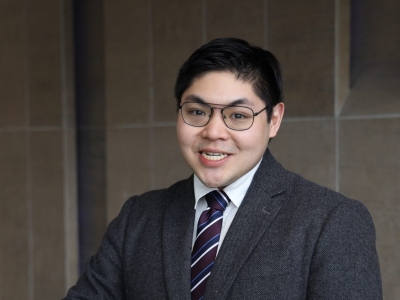
Amanda Clarke, an associate professor in the School of Public Policy and Administration (SPPA), developed an online quiz to learn more about young voters.
As a PhD student, Amanda Clarke conducted research into how well government bureaucracies used social media to connect with the public. Her findings? Not very well.
Now, she’s turning her attention to another communications issue that government bureaucracies struggle with: convincing young people to vote.
Clarke is joining forces with a student-led group called Vote Savvy, with the aim of increasing voter turnout among youth in the upcoming federal election.
Why aren’t more 18-24 year olds voting?
There are two main issues. One is that people this age tend to be moving around a lot so they’re not sure if–or where–they can vote on Election Day.
The other issue is that youth don’t see politicians focusing on issues that matter to them. But because they don’t vote in large numbers, it’s less likely the parties will focus on the issues they care about. So it’s a vicious cycle.
For instance, only 39% of youth voted in the 2011 federal election, versus 58% of voters overall and 75% of seniors.
How do members of Vote Savvy hope to boost turnout?
Vote Savvy was started by a group of university students and, put simply, their argument is, “Why are you letting someone else choose your government?”
They’ve created a non-partisan website that offers a toolkit for student organizers, teachers and administrators to inform youth about their choices in this election.
There’s also a quiz that will gather information on the issues youth care about. Once someone takes the quiz, the website will then produce a personalized report on where each national party stands on those issues and information about where to vote.
The quiz is where you come in as a researcher. What was your intention when you created it?
I mentioned to a colleague that I was interested in collecting data on youth civic engagement. That colleague-Elizabeth Dubois-suggested teaming up with Vote Savvy to collect data, but then turn it around to match the user with the parties that best address their concerns. So it’s a win-win situation.
We ask them about the issues that are most important to them, but also where they are getting their political information: friends, parents, political parties? That’s a big gap in the research right now.
To take the Vote Savvy quiz, click here.



